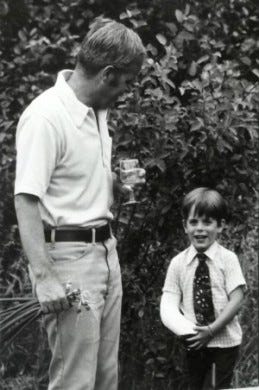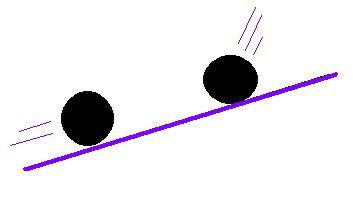How My Mental Disorders Have Influenced My Work
Bipolar disorder and autism are different ways of thinking
“There is much in the universe we will never know, and it is equally certain that we will never know all that we do not know.”– Joseph Silk, Gresham Professor of Astrophysics, Oxford University.
As a longtime scholar who has also written about being Type I bipolar and on the autistic spectrum, I was asked to write about how being bipolar has affected my research and writing.
My different way of thinking, perceiving and behavior has greatly influenced my work and has been a key element to my innovation and success. Thinking and feeling differently means seeing different things, seeing things from a different viewpoint and not accepting orthodoxy that is naturally accepted by the majority.
This essay touches both on my mental illness in relation to my work, and my academic work itself. They are related.
.
My work is in philosophy and cognitive science, with my philosophy areas including philosophy of mind, philosophy of cognitive science, philosophy of science, and philosophy and psychology of religion. I study and write about minds– human, non-human animal, artificial, group, theoretical–, how they work and their limits, and the nature and limits of human knowledge. Areas of study have included art perception, mystical experiences, artificial intelligence, visual illusions, neurodiversity, symbolic language, the nature and limits of science and logic, and the neurology and cognitive science behind belief systems. My Ph.D. dissertation was on the neuroscience of belief systems.
There are many different ways of thinking and organizing information, and all human conceptions, theories and belief systems are created by the brain. Psychology, as an academic discipline, should go hand in hand with philosophy, science, political science, theology, and all academic areas. A philosopher’s philosophy can no more escape his mind than he can escape being human. The same with a scientist, theologian, and any other type of thinker.
Immanuel Kant wrote that there are things as they appear to humans, and these constitute the immanent world of common, personal experience. He said these appearances are illusions because they are translations by the human senses and mind, and that things in their true nature and forms are beyond empirical access. He said things in their true nature belong to reality and transcend human experience, knowledge and senses, and that humans cannot have true knowledge of reality.
Humans cannot step outside out of their own minds and senses, outside of themselves and the human species to see the blind spots, delusions and biases that they are unaware of. This is one of the essential limits of human thought, conceptions and knowledge, and of self-assessment.
.
I am Type I bipolar and autistic. Type I bipolar is a severe mental illness, and I’ve exhibited symptoms since I was a little kid. The illness and its causes are complex and, as with most areas, not fully understood or easily categorized. There often are genetic and environmental components, with the brain cognitively, chemically and emotionally functioning differently than normal. Autism also involves organizing and perceiving information differently, and having different emotional perceptions and interpretations of things.
I won’t go through my colorful personal history dealing with the mental illnesses other than to say that I’ve been on lithium or anti-seizure medications for more than half of my life and have had psychotic episodes and altered states of consciousness throughout my life at least since I was seven years old. During one period it became so severe that my parents said that, if wasn’t for diagnosis and treatment, including medication and support, I may have ended up homeless or dead.
While adapting to society’s norms and expectations has been a skill practiced and developed over time, I don’t say that I’ve succeeded in my work as a scholar despite my mental illness but because I think differently than others. I am an original and fiercely independent thinker, one looking at things from different and new viewpoints. Do I consider my thinking differently a curse? Of course not. It’s a gift and I wouldn’t have it any other way. I am proud of who I am.
Anyone who knows me well knows that I have what I call my “traits.”
I have autistic stimming behaviors, including pacing, swaying and rocking. I also don’t think or naturally express myself linearly. Read more about autistism stimming and masking.
I am attracted to disorder and dislike group ceremonies. I don’t function well in rigid, controlled, rule-filled environments. I work best on independent projects where I can do things my own way and on my own schedule.
I don’t have the same emotional reactions and sensibilities as others. While social and gregarious, I don’t form close emotional connections as others do or have a need to.
I’m well-known as an outspoken, provocative contrarian who questions orthodoxy.
As with many autistic, I can be hyperfocused on a single topic, and am hyperpersistant. I am impulsive, prone to severe stress, and can over-communicate. I’m a homebody and dislike travel and geographical changes.
When I was young, my chemical engineering professor father said to me, “You have a strange mind.” He followed that up by saying that, as a professor, he meant that as a compliment in that I thought about subjects that never even entered most peoples’ minds and saw topics from unique viewpoints. It didn’t surprise him that I became a philosopher.
.
Humans are sensory information processors
Humans receive limited sensory information and use various complex internal methods to process, categorize and try to make sense of the information in order to make perceptions, judgments and pick courses of action. That is what humans are about. Much of my work has been studying how humans and non-humans process information.
There are countless real and theoretical ways for a brain to process sensory information. Each method is limited and has its own set of biases, subjectivity and trade-offs. Humans cannot know which, if any, is the ”best” or “correct” way, or even if there is a best or correct way. Non-human animals and artificial intelligence process information differently and can do it better for their particular, narrow purposes.
Along with the limited sensory information received, this is one of the limitations of human knowledge. We have no idea if our way of thinking is correct, and in fact know it has many problems, distortions and limitations.
Visual illusions demonstrate that physical reality and human perception of reality are different things. Despite the appearance, the middle bar does not change in color or tone. If you cover up the image so only the bar is showing, you will see this.
.
Simplifying and generalizing this greatly for this essay, humans normally use two competing and simultaneous forms of thinking to function. Think of them as offering two viewpoints and checks and balances on each other, or two heads are better than one. Neither is correct, each gives a different limited view and different perspective, but working together they allow the human to function well in the world
Parts of the brain process and interpret the sensory information in an emotional, aesthetic, visceral, holistic way– and this forms much of our emotional, intuitive, aesthetic reactions to stimuli.
Separately but simultaneously other parts of the brain order, categorize, label and “intellectually” processes information. The raw sensory information has to be given some structure, categories and labels to try to understand what to do with it. To do this brain unconsciously creates an artificial imaginary structure to the information. To humans, their perceptions of physical geography, categories, identities and the way they mark and perceive time are artificial constructs created by their brains.
Human symbolic language is a distinctly human thing where the parts of the brain artificially order and label things for convenient use. Not unlike a computer, humans translate sensory information into symbols.
In my area of philosophy, a key to know is that human biology and thinking are primarily about functioning and survival, and function involves and in fact requires the distortion and suppression of information, the use of unconscious biases and even lying to oneself. Human perception and thinking is distorted and delusory in many ways.
Whether our mental methods used for function can also, as a side effect, prove or examine objective and metaphysical truth is a question to ponder and one humans cannot actually answer.
.
Mental illnesses and processing information differently
People with mental illnesses process sensory information differently than normal.
Schizophrenics, for example, perceive all the normal sensory information but lack the standard methods normal people have to cognitively structure, order and label the information as normal people do. This is the reason they have trouble adapting to society’s norms.
However, as they perceive and experience information in a different way, schizophrenics have included original artists, thinkers and mystics. A schizophrenic artist said being schizophrenic is great for painting and writing poetry, but horrible for driving because you are constantly immediately aware of every crack and leaf in the road. Many famous ancient mystics, prophets and aboriginal societies, who processed sensory information in valid but different ways, would be cataloged today as schizophrenic.
For me, there are two major aspects of my mental illness that are relevant: a different cognitive ordering of information, and having different emotional experiences and associations. These are often closely tied together.
Cognitive ordering
All functional systems require assumptions, definitions, labels, categorization and rules to function.
Humans must translate things to understand and perceive them. Thus, how humans translate things– what particular models, styles, narratives, perceptions of time and space and categories, language– is of great significance because it forms how humans perceive things. All human translations, including the socially standard ones, involve arbitrary and artificial rules and definitions, and unproven and often unprovable assumptions.
Humans must translate things in order to understand them, but what they understand is the translation.
I have different than normal ways of cognitively ordering things, and, when left to my own devices, a different way of expressing them. This is particularly true in how I organize and make narratives about information.
Narrative is an integral part of how humans perceive, identify and judge information. A narrative is the conscious and non-conscious story people see and tell about their lives, used to describe observed situations and even still objects. Narrative includes perception of time, plotting, mood, point of view, emphasis (what is important. what is not), character motives, etc. When humans look at a still photo or painting or a distant stranger couple standing at the light we perceive a story in progress.
Describe what going on above. Even though this is an abstract combination of dots and lines, most will say this shows two balls racing towards each other. Viewers can even describe what they see as happening before and after this image. However, unlike a movie still or snapshot photo, there neither is nor was any before or after. As I am the one who created this design, I can assure that this is the only image, the one and only existanse of these dots and lines. There is no narrative with this image other than as speculated by the viewer. That it shows balls on a line is itself a product of the viewer’s imagination.
Narrative is how we understand, assign meaning and communicate ideas. In schoolroom lessons, religious allegories and daily conversation, stories are a method to explain ideas to others. Though the stories are often false and misleading, humans are storytellers.
I tend to apply different narratives, ordering and aesthetic styles to information. This is expressed in the ways I talk, and in the way I write. Though I conform to standard writing styles in my academic books and here, I find the standard and academic narratives and styles to be arbitrary, artificial, stifling and thus false. Unlike my textbooks, my books Noise Music and Return Trip represent my natural non-linear way of thinking, writing and aesthetic sense. They are also in part commentaries on how aesthetic and narrative biases affect knowledge.
.
Emotional meaning and associations
Emotions, emotional intuition and aesthetic biases are integral parts of human thinking and function. They are integral parts of human intelligence and reason, including as used by scientists, mathematicians and logicians.
Rachel Paine, of the London School of Philosophy, writes, “Emotions bear complex relationships to rationality. On one hand they are seen as arational or irrational, on the other they make our actions intelligible and arguably lift us above the purely mechanistic behaviours of machines. Much like human sensory perception, emotions perform an essential function: they inform us about the world.”
Much important human thinking, conceptions and beliefs– such as about metaphysical and emotional meaning, morality, aesthetics and ethics, art, and life decisions– are beyond objectivity and logic. They based in emotional thinking. Having different emotional and aesthetic interpretations is thus of great significance.

Being Type I bipolar and autistic, especially when one has it during one’s formative childhood years, involves having and developing different emotional and intuitive interpretations and associations. Considering the cognitive significance of emotions in making assumptions, forming world views and answering subjective metaphysical questions, this has profound significance.
Since I was young, I’ve also had a different general sense of the world and the things in it. I’ve felt things differently.
Mystical experiences are a common symptom of bipolar mania, along with epilepsy and schizophrenia. Mystical experiences happen when the normal cognitive structures that define time, space and categories are suppressed in the brain and the sensory information is processed emotionally. This results in a radically different perception of the world and the things in it.
These different emotional and aesthetic ways of perceiving the world and things in it force one to question conventional assumptions and perceptions, and not rotely accept the views and subjective truths and assumptions that are widely held by others. I’m noted for not being human-centric in my writing can more objectively observe how others think and perceive.
My medical scientist colleague and friend says that, as with other bipolar and autistic people she knows, I’ve been trained to follow the social rules and norms but they do not come intuitively to me as I feel things differently. Bipolar people and schizophrenics can have impaired theory of mind, meaning having less of an ability to identify mental states in others and themselves. My friends says I go through the motions of social norms but without intuitive feelings.
In peer reviewing my books, such as Philosophy of Artificial Intelligence, she and I can be at philosophical odds. As a medical scientist, she views humanity from within, while, as a philosopher, I tend to view it from the outside. She wants me to refer to humans as ‘we’ instead of my usual ‘they.’
Many bipolar people have a love-hate relationship with the medicine and treatments. The medicine and treatments are about thinking and functioning according to society’s norms (which is important), but many bipolar people, often artists, do not like how it suppresses their different and creative ways of thinking. Studies have pointed to creativity, intelligence and bipolar disorder having the same underlying genetic traits.
.
My being able to perceive and cognitively order things differently has shown the arbitrary, artificialness and dubiousness of the standard human way of thinking. However, it has not shown that my way of thinking and perceiving is better, but that there are other ways. I often point out that my way of thinking isn’t better or more correct, just different.
The essential conclusions of my cognitive science and epistemological work are that there are different ways of perceiving, interpreting and categorizing sensory information, and that each way has its own subjectivity, biases, distortion, unprovable assumptions and limits. In part due to this, humans cannot obtain certain knowledge and everything is opinion.
Though, while humans cannot obtain certain knowledge is the answer to that philosophical question, the vast areas of subjectivity and opinion– speculation, imagination, art, spirituality, political science, making choices in an ambiguous and unknowable environment– is another philosophical area of further study.
.
The last aspect of my disorders and my different way of thinking is that I am a champion of diversity, freedom of expression and speech, and the healthy exchange of ideas. I chafe at new trends toward illiberalism, censorship and expectations of ideological conformity. I wrote about this the earlier post, Intellectual Freedoms Support Diversity





